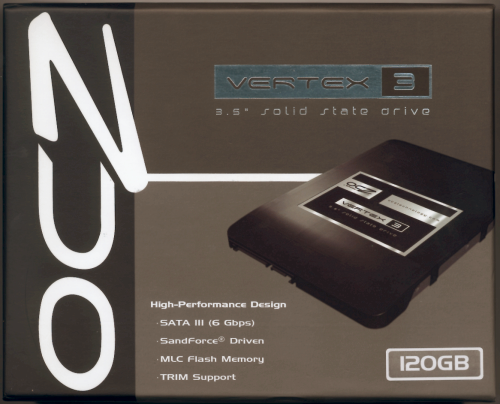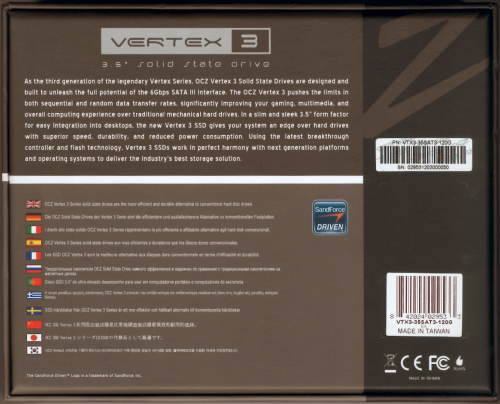The Vertex 3 3.5" comes in a small, black and gray box. Along with a picture of the drive, the front advertises many of its key features including its 120GB capacity, SATA 6Gbps interface, SandForce controller, MLC flash memory and TRIM support. The back of the box provides a bit more information regarding the Vertex 3's features and capabilities. Inside, you'll find the SSD, an installation guide and a sticker that says "My SSD Is Faster Than Your HDD."

Physical Features:
The new Vertex 3 3.5" shares the same basic design as the 3.5" versions of OCZ's Vertex 2 and Agility 2 SSDs. The top of the outer casing is made out of smoky, semi-opaque plastic. There is also a large, silver and black sticker showing that the SSD is part of OCZ's Vertex 3 series. The bottom of the casing is made out of aluminum which has a bright, brushed metal finish. The stickers on the bottom show the drive's part number, capacity and serial number.
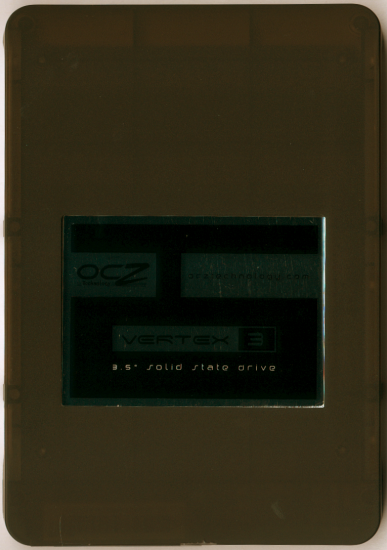

While only 11mm thick, the OCZ Vertex 3 3.5" has the same footprint as a standard 3.5" hard drive. As you can imagine, it looks quite large when placed next to the original Vertex 3.
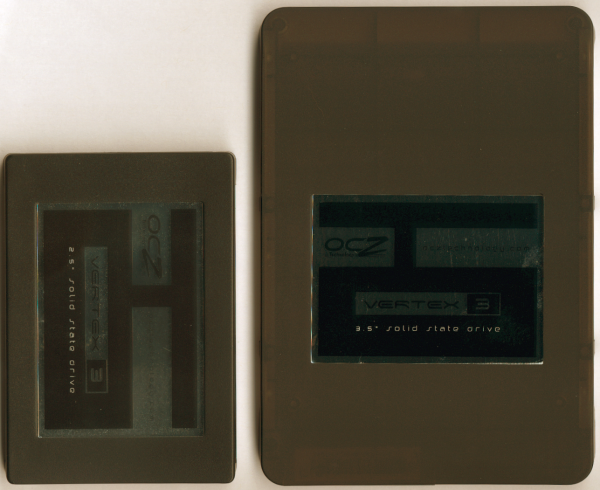
I was a bit surprised to see that OCZ had not taken the original Vertex 3 and simply placed it in a 3.5" case. Instead, the company designed an entirely new PCB specifically for this form factor.
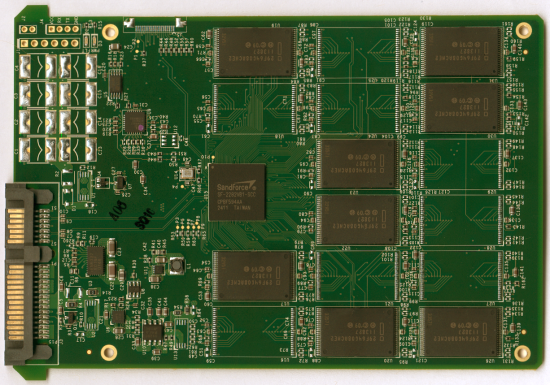
The size of the PCB isn't the only difference between the Vertex 3 3.5" and the original Vertex 3. OCZ's new drive also uses LSI's SandForce SF-2282 controller chip instead of the SF-2281 found in the Vertex 3. The only notable difference between the two chips is that the SF-2282 supports 16 byte lanes which allows for higher capacities.

For the 120GB Vertex 3 3.5", OCZ opted to use Intel's 8GB 25nm 29F64G08ACME2 synchronous NAND flash chips. Looking at the pictures above and below, you can see that there are eight of these chips on either side of the PCB. If you do the math, you'll see that this equals 128GB and not the 120GB of storage the drive advertises. The SandForce controller uses this extra 7% (8GB) to maximize read and write performance and extend the endurance and overall reliability of the drive.



